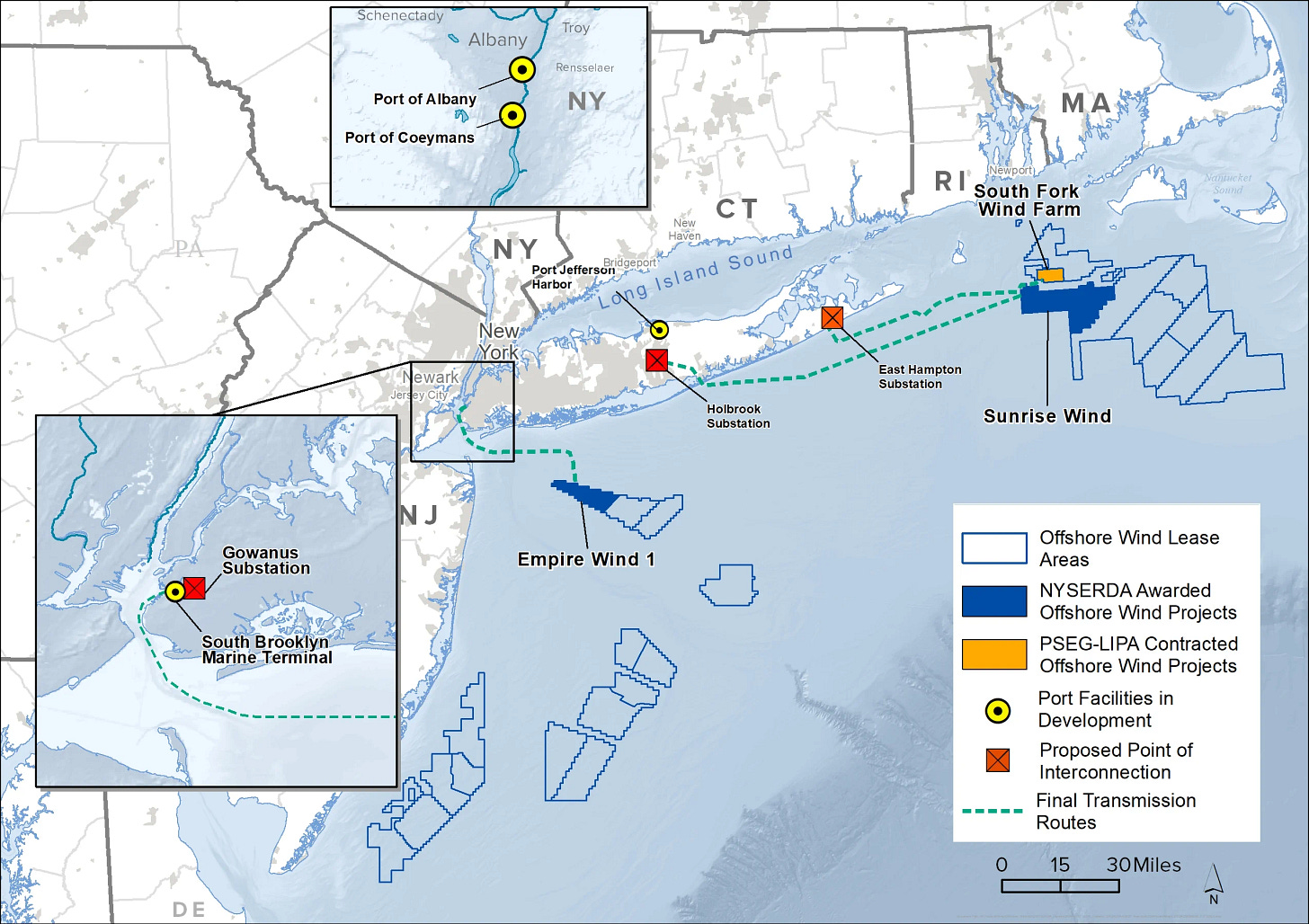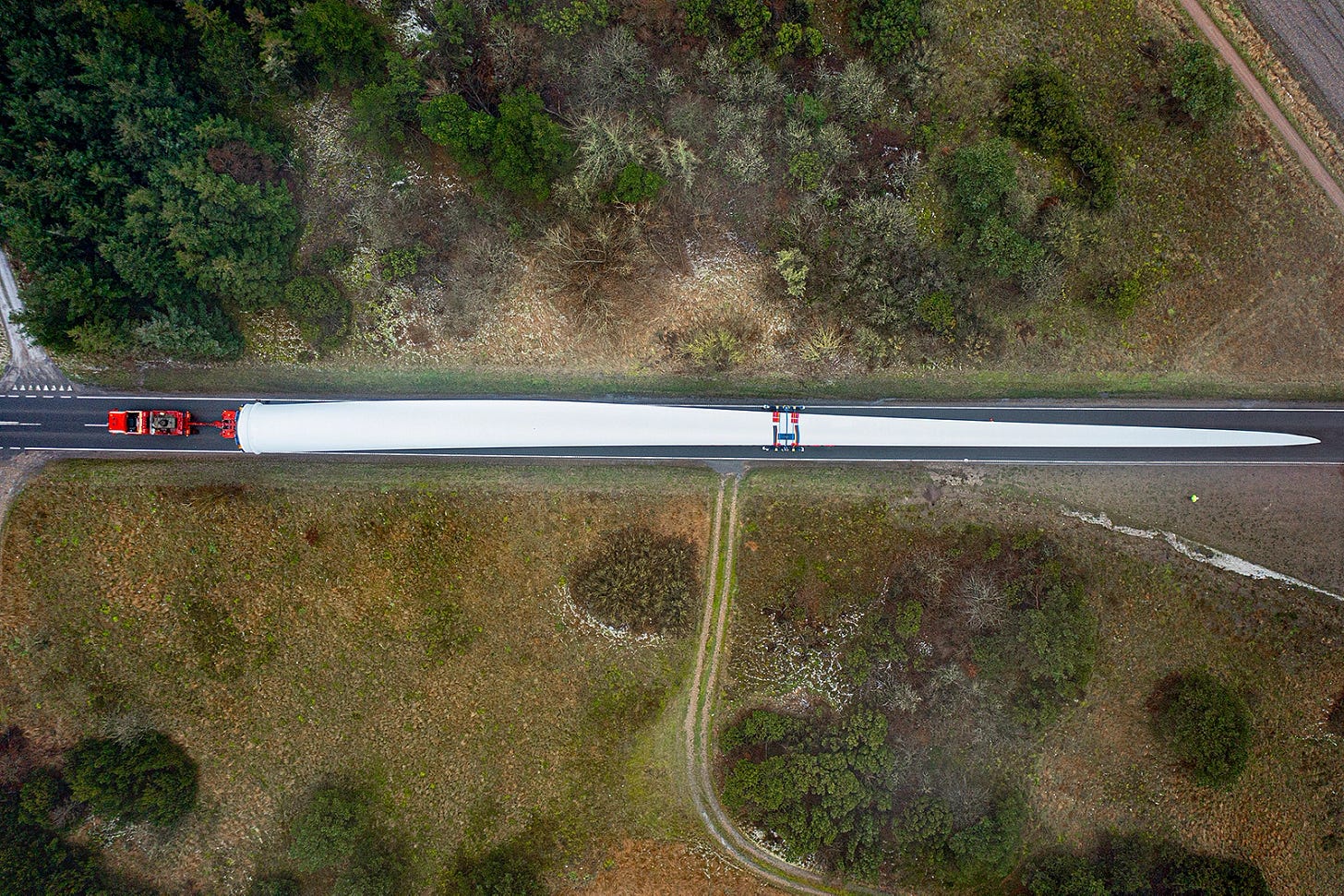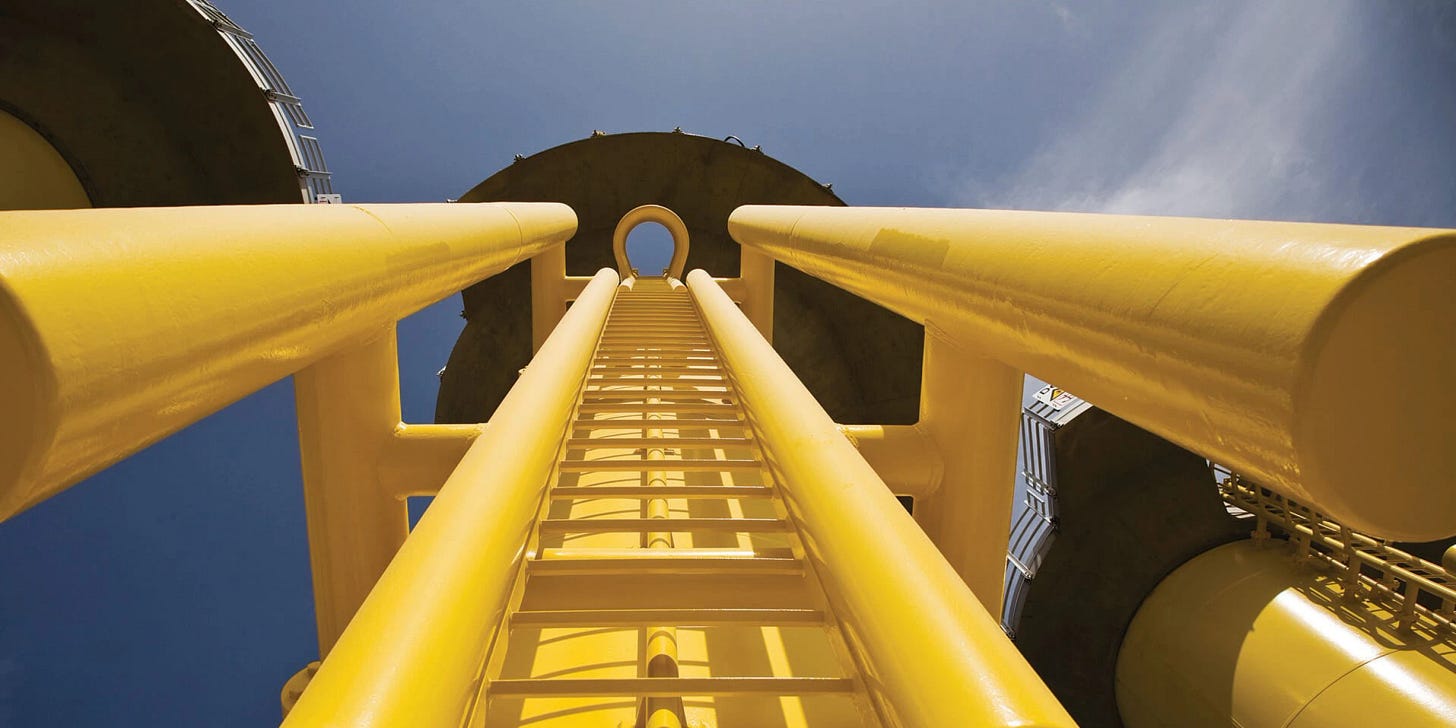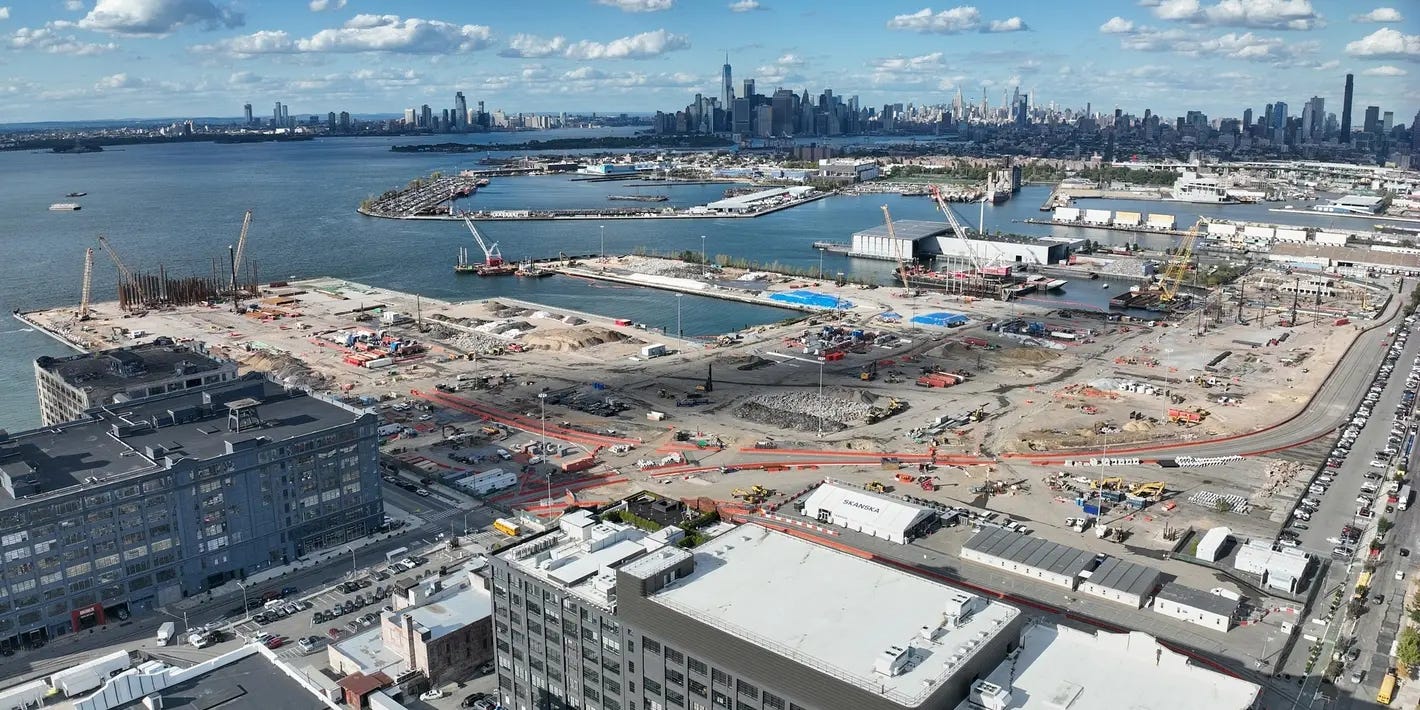Will Empire Wind survive the Trump administration?
From today, construction on New York’s massive offshore wind farm is paused. It was slated to start commercial operations in 2027.
Welcome back to The Off Site, brought to you by Aphex!
This week, we’re looking at Empire Wind — a massive project to supply New York’s energy grid with over 810MW of green electricity.
Located 15-30 miles off the New York coast, Empire Wind is an ambitious project. Its operational date has been pushed back time and time again, and they’ve faced challenges from planning permissions and thwarted joint ventures to wrangling some of the world’s biggest wind turbines.
Until today, the winds of fortune seemed to be favouring New York State’s biggest offshore project. But with the latest order to halt construction, the future of the megaproject is in doubt.
Come along as we break it down for you!
A 2GW wind farm
If built, Empire Wind will be made up of 54 turbines, arrayed in a triangle taking up 80,000 acres of the New York Bight. Each of these turbines can produce 15MW of energy, making the planned capacity for the whole project 810-816 MW — enough to power 500,000 New York homes.
And that number is just for Empire Wind 1. Since its inception, the project was intended to have phases, with Empire Wind 2 including 80 more turbines, bringing the capacity of the whole project up to 2GW.
Compared to the three other operational wind farms in the US, Empire Wind is huge. Block Island has 5 6MW turbines. Coastal Virginia Offshore Wind has 2, also 6MW. And South Fork, the biggest currently operational offshore wind project, has 12 11MW turbines.
Given a slew of permitting, procurement and political interruptions, the fate of Empire Wind 2 is still up in the air. But until today, Empire 1 was charging ahead, with New York authorities expecting commercial operations to begin in 2027.
An international endeavour
So, with a project this big, who’s involved?
US coastal waters are divided into grid-like federal leases, leased by the federal government to companies who collaborate with local industry and state governments. In the case of Empire Wind 1, that company is Norway’s Equinor.
In 2017, they acquired a lease as part of a 50/50 joint venture with British energy giants BP. But in 2024, Equinor took full ownership of Empire Wind, and BP did the same for Beacon Wind, another formerly-joint project further north.
French company Nexans were awarded a contract to make and install the two 230kV underwater export cables connecting Empire Wind to the Sunset Park onshore substation. That substation is located at the South Brooklyn Marine Terminal (SBMT), which we’ll come back to.
Danish company COWI has designed, and is currently fabricating, the monopiles that the 54 turbines will be mounted on.
Maersk (Denmark) is constructing a new Wind Installation Vessel, and Kirby (USA) will build and maintain two new tugboats to transport turbine components from the SBMT to the Empire Wind lease area to the south-east.
US-owned marine transportation company Edison Chouest Offshore has been chartered to house 60 wind turbine technicians during both the construction phase and for ongoing maintenance.
And Vestas, a Danish company, are contributing the turbines themselves — massive structures with a tip height of 270 metres, just 60 metres shorter than the Eiffel Tower.
What does it involve?
Even now, with construction underway, not everything is set in stone.
At its shallowest point, the lease area is 22 metres deep. At its deepest, it’s 41. The New York Bight is also known for its choppy weather — which, while a logistical challenge, is also partly why it’s a great spot for a major wind project.
The turbines
The rest of the infrastructure is critical, but it’s the turbines that are really exciting.
Empire Wind 1 is using Vestas’ only offshore turbine model, the V236 15MW. Launched in 2021, they were the first 15MW turbine on the market — they’re big, and as powerful as they currently get. The swept area of each turbine is 43,742 m2, and each of their three blades are 115.5 metres long.
Vestas claims that they can operate at a capacity factor of over 60%, making them one of the highest capacity turbines on the market. Offshore turbines have higher capability and output than onshore ones, but even so, that puts the capacity factor of these turbines significantly higher than average.
And Vestas’ offshore turbines are built to last: from tropical cyclones to the gales of Nordic waters, they’re “rated to withstand IEC 1 extreme wind conditions up to 50 m/s and IEC T up to 57 m/s.”
The foundations
COWI is designing, building, and installing the monopiles to fix the turbines to the seabed of the New York Bight.
Much of the site research involved analysing and modelling how the site’s soil behaves, as well as the potential pressure of waves on the structures.
A major concern for COWI and Equinor’s other contractors is how to install and maintain the fixtures without disturbing marine life. One approach will involve the use of bubble curtains to provide shields against the significant ongoing noise of the turbine/monopile structures.
The energy transfer
Nexans’ cables will transfer the energy to the South Brooklyn Marine Terminal. That underwater route is 24 kilometres long — and, to avoid interference with fishing equipment and anchors, the two cables will be buried approximately 1.8 metres below the seabed.
South Brooklyn Marine Terminal is a pre-existing terminal in the Upper New York Bay. Ground has been broken on its upgrades, which will involve updating an electrical substation, and equipping the terminal to serve as a base site for the rest of the project.
Offshore infrastructure like the monopiles and turbines will be assembled at the terminal and transported from there to the lease site.
As mentioned, part of the SBMT is Sunset Park, an onshore substation. From Sunset Park, Empire Wind’s electricity will be connected into a new substation, Gowanus, constructed by local NY energy company Con Edison. That ConEd project will transform Empire Wind 1 into the first offshore wind project to connect directly into the local NYC grid.
What does it cost? And what’s going on with Trump?
Equinor has said that the whole Empire Wind 1 project will cost $5B USD, $3B of which is currently secured.
Even under the relatively favourable conditions of the Biden administration, Empire Wind already faced financial ups and downs, including the fallout from the COVID pandemic, rising costs, and inflationary pressures.
On the 20th of January 2025, US President Donald Trump issued an Executive Order temporarily withdrawing areas on the Outer Continental Shelf from being available as federal leases for offshore wind projects, as well as reviewing the Federal Government’s leasing and permitting practices for wind projects.
Until today, this executive order hasn’t actually halted any current works. What it has done is produce severe uncertainty in the plethora of proposed and unstarted projects.
Despite this, Empire Wind 1 is striking out ahead. Works are underway at the South Brooklyn Marine Terminal with turbine delivery expected in 2026. Unless the Trump administration gets its way and manages to reverse an already-permitted project, commercial operations are slated to begin in 2027.
On the pod
This week on the podcast, Jason and Carlos dive deep on three key construction industry topics: The Hudson Tunnel Project, a LinkedIn debate about tech vendor pricing, and the ins and outs of Brisbane’s 2032 Olympic delivery plan.
Has Brisbane left its planning way too late? How urgent is New York’s Hudson Tunnel Project? Should contractors be wary of tech vendors offering suspiciously low prices? Tune in and find out.






Let’s face it. With a fully permitted project being stopped by Trump, this looks like nothing short of extortion.